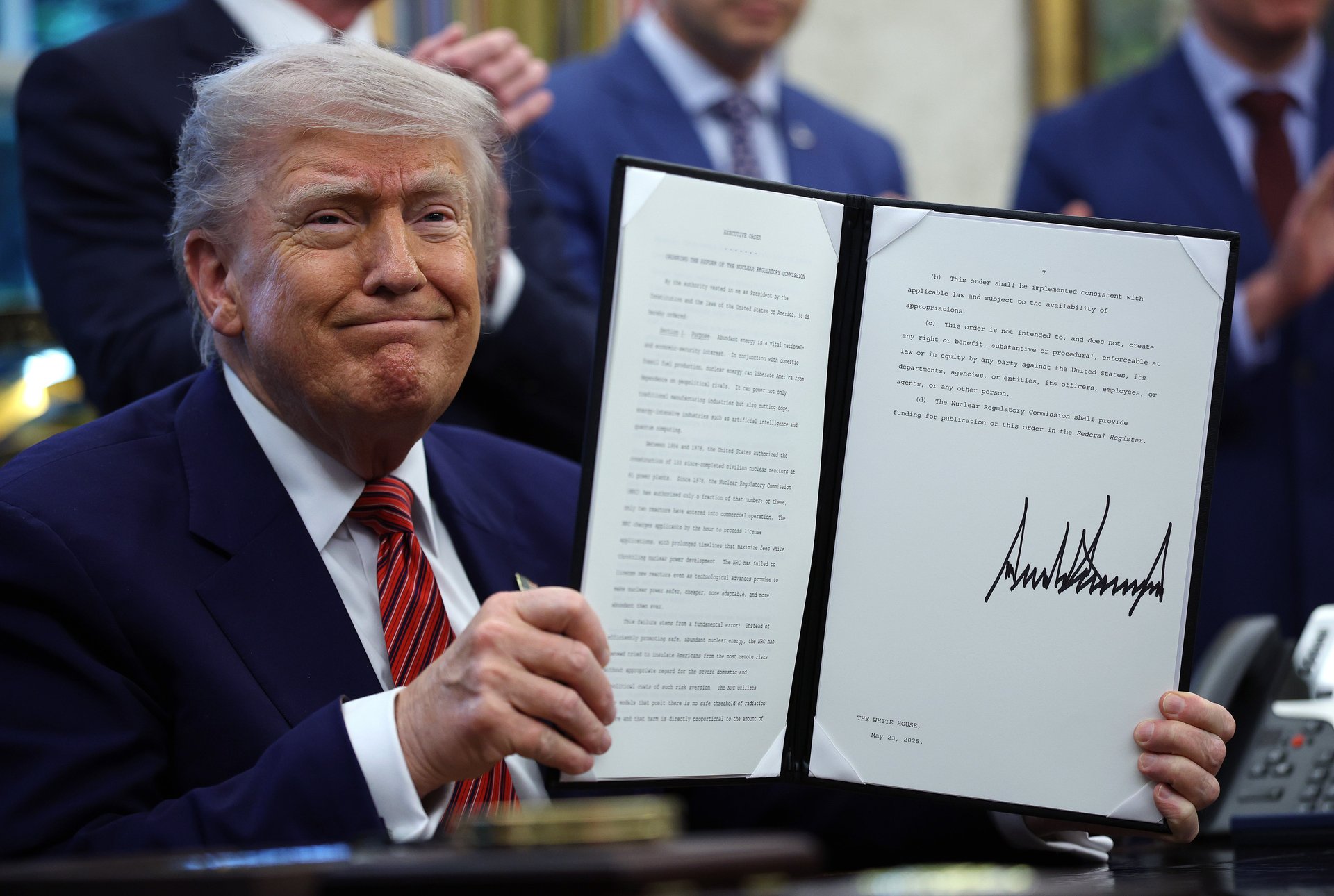Trump wants to end federal control of Fannie Mae and Freddie Mac. Here's what to know
Fannie and Freddie may still be owned by the U.S. government for years

The Trump administration wants to put a new “welcome” doormat on the front steps of mortgage giants Fannie Mae and Freddie Mac.
President Donald Trump said Tuesday that he wants to undo government ownership of Fannie Mae and Freddie Mac and let them go public. It’s a concept that has occasionally popped up in policy debates since the Obama administration.
Here’s what to know about a possible Trump-led effort to end federal control of Fannie and Freddie.
What are Fannie Mae and Freddie Mac?
They’re a pair of government-supervised mortgage firms with an enormous footprint in the housing market. The firms don’t actually make home loans. Instead, they purchase mortgages from lenders, bundle them into securities and sell them to investors with a federal guarantee against default. That guarantee renders Fannie and Freddie attractive to investors since they’re shielded from losses.
Fannie and Freddie comprise about 70% of the mortgage market, according to 2023 data from the Urban Institute. The pillar of the market is the 30-year fixed-rate mortgage, a distinct American product that insulates homeowners from inflation spikes or changes to interest rates while paying off their homes.
What role did Fannie and Freddie play in the 2008 financial crisis?
Fannie and Freddie had long operated as publicly-traded businesses responsive to shareholders since their inception. But in 2008, Fannie and Freddie crashed into trouble after buying a flood of toxic loans. Housing prices nosedived and homeowners trailed on mortgage payments. Fannie and Freddie’s losses were enormous.
The ensuing mortgage-market meltdown led to a bailout of Fannie Mae and Freddie Mac, which placed them into what’s known as “conservatorship,” an arrangement giving the federal government broad powers in managing the firms. That fell just short of full-blown nationalization. The federal rescue of Fannie and Freddie was originally designed as a short-term fix, but the setup has lasted almost two decades.
Does Congress have a role in taking Fannie and Freddie public?
A federal spinoff of Fannie and Freddie isn’t a new idea. Congress has flirted with it before, but several attempts fizzled out over the years.
In 2019, then-Senate Banking Chair Mike Crapo, an Idaho Republican, released a three-page outline that would turn the institutions into private guarantors with a limited share of the mortgage market. The push didn’t gain traction.
Some observers argue that privatizing Fannie and Freddie could be achieved through the Federal Housing Finance Agency (FHFA), though it would take several years to complete an arduous process.
What has Trump said?
Fully restoring private control of Fannie and Freddie wasn’t an explicit goal of Trump’s 2024 campaign and he didn’t mention it on the campaign trail. But he has taken an interest in the idea in several social media posts.
In addition to stating his intention of eventually selling off Fannie and Freddie on Tuesday, Trump wants to rewrite the unspoken contract between investors and the federal government. He made explicit what was once treated as implicit in the housing market: The U.S. would again prop up the mortgage giants if another 2008-style economic meltdown fell at their doorstep.
Analysts have widely expected a second Trump administration to try and finish what they started. The first Trump administration sought to promote private competition in the mortgage market, arguing it was an effective method to lower mortgage rates. In 2019, the Treasury allowed Fannie and Freddie to keep more of their earnings and begin rebuilding capital reserves so both could eventually function without government support. Democrats at the time were chilly to the measures.
What happens next?
The Trump administration could try to release Fannie and Freddie from federal ownership without Congress, a step that’s likelier given that lawmakers have devoted little time and resources on the issue. “Its implementation is likely to take many years, potentially longer than the four years Trump II will have in office,” housing expert Donald Layton said in a January blog post for the NYU Furman Center.
Investors such as Bill Ackman, who bought shares at deeply discounted rates, stand to make a windfall if Fannie and Freddie become publicly traded.
Some analysts warn that casting off Fannie and Freddie into the private sector could drive up mortgage rates. But that depends on how their release from conservatorship is structured and the strength of a federal guarantee to rescue them if they fail.
FHFA director Bill Pulte said during a congressional hearing in February that any exit from conservatorship for Fannie and Freddie should be “carefully planned” to avoid unsettling mortgage rates.